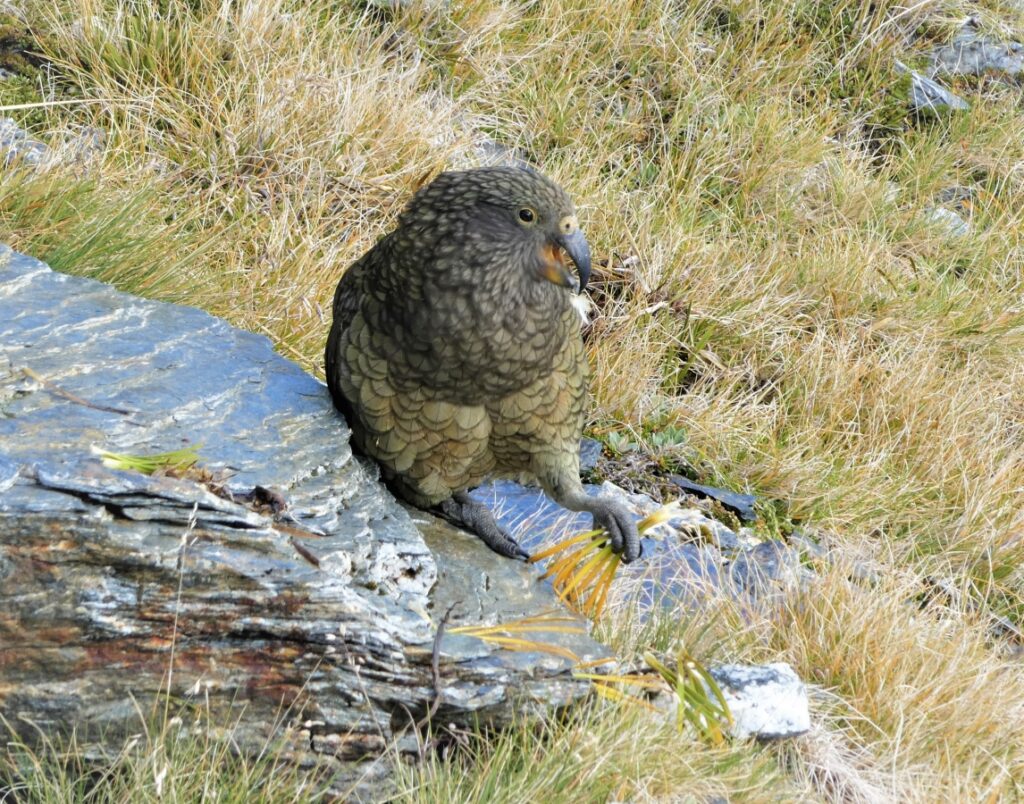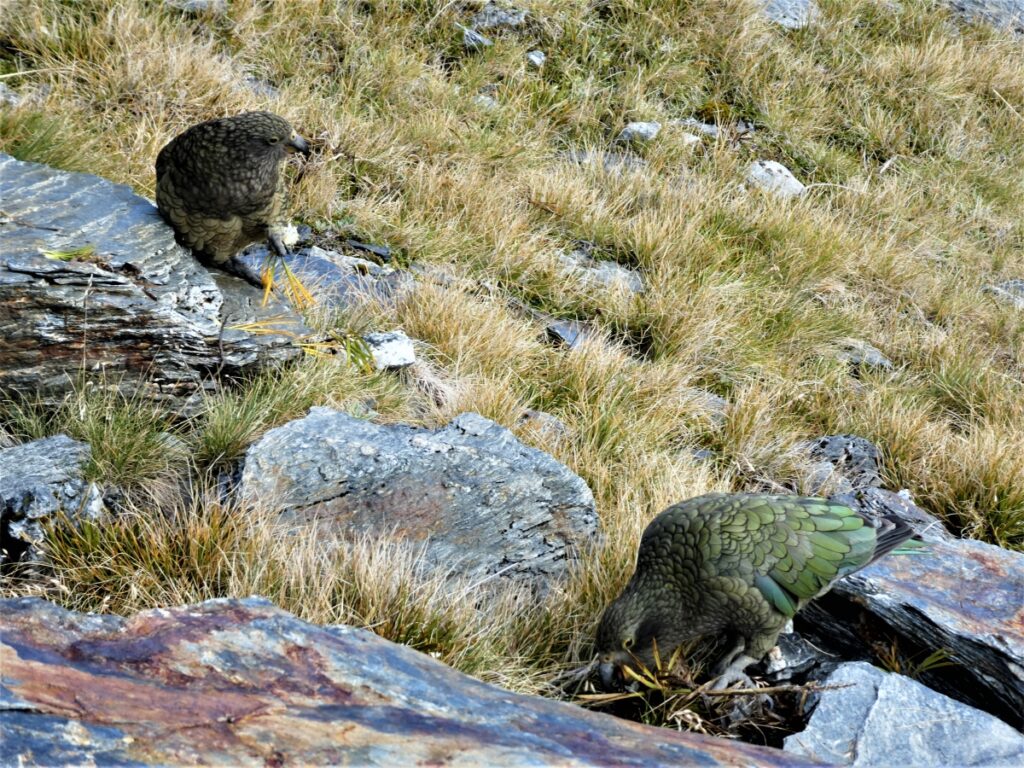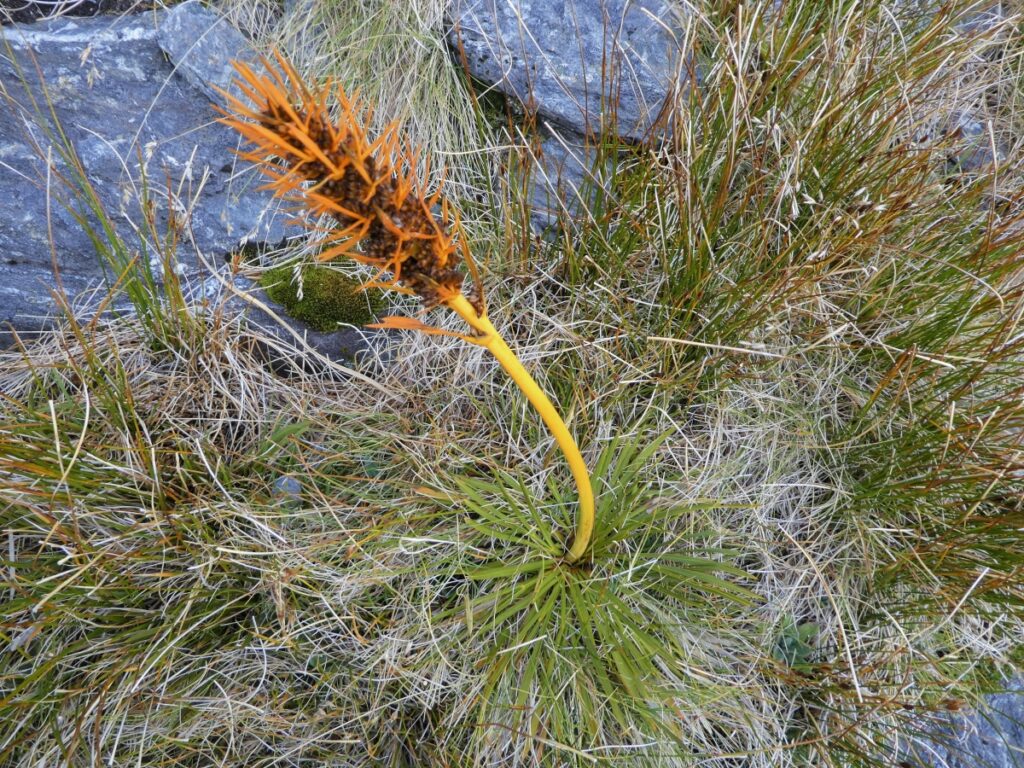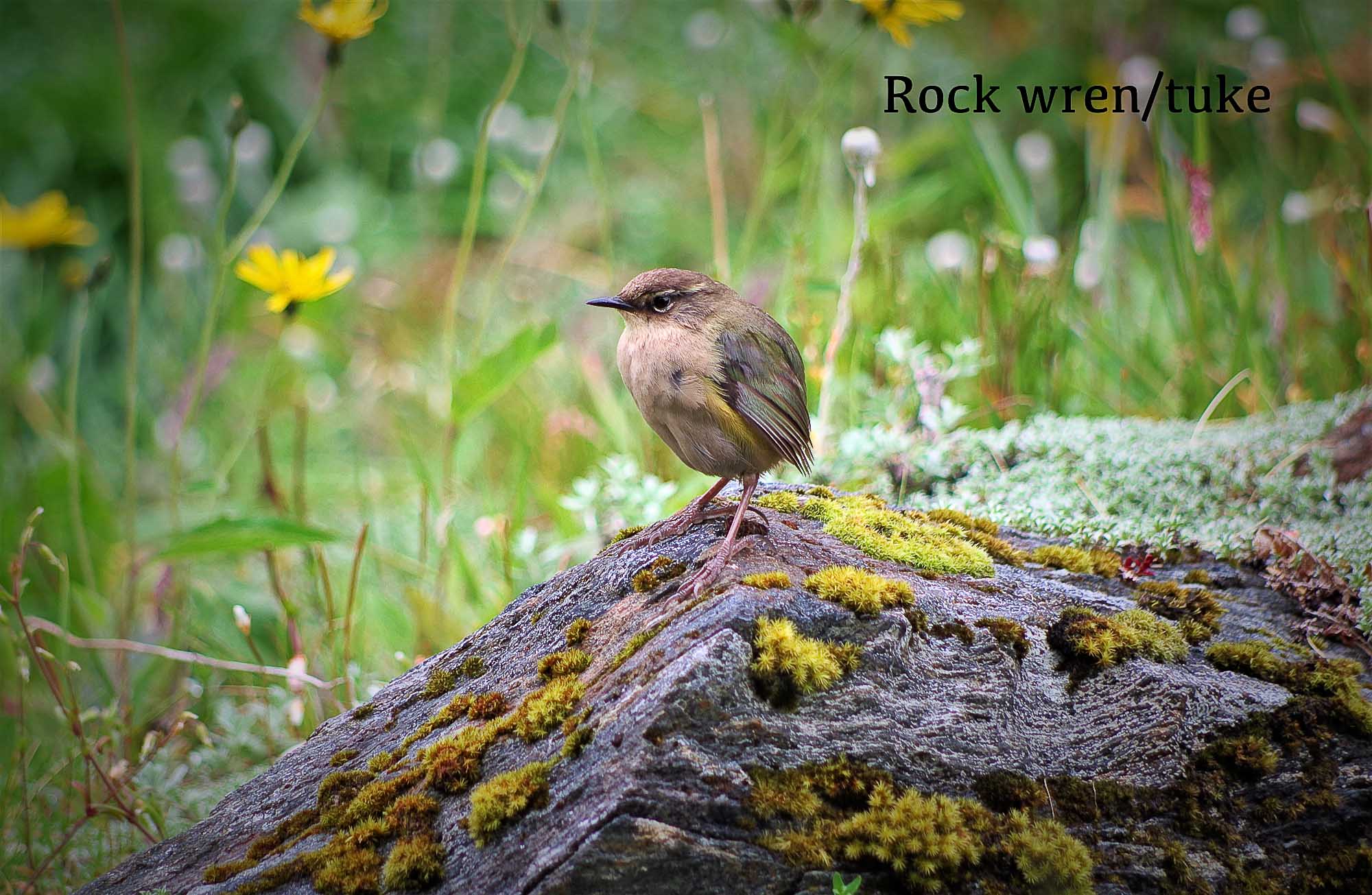The Kea, Aotearoa’s endangered alpine parrot Nestor notabilis is partial to the roots of Aciphylla (speargrass) such as Aciphylla kirki and Aciphylla hectori (endemic to New Zealand). Aciphylla plants are a unique feature of the alpine flora of New Zealand.
It was a pleasure to observe this natural kea behaviour in the Wilkin Ōtānenui Valley. The combined use of their feet and bill for trimming and preparing this snack was quite outstanding to observe. Not surprising as the kea is known to be the world’s smartest bird (its intelligence rivals that of a monkey) according to the Institute of Cognitive Biology in Vienna.


*Turns out that this species of Aciphylla kirkii/hectorii (not easy to distinguish between the two) hasn’t yet been recorded this far north and is therefore a possible expansion to it’s existing known range. Botanist’s from Te Papa are interested to find out more about this species group as part of a national study, re-examining the number of Aciphylla species and this initial observation by ABT’s Rachel Hufton has led to their upcomming visit.


ABT’s Kea observations to date within the Makarora and Wilkin catchment (since 2017) estimate the current local population to be between 39-41 birds. During late autumn and winter the occassional kea can be noted visiting residental areas of the Makarora Valley.
Certain species of endemic Aciphylla are know as important taonga to Māori with significant cultural and historic value. Taramea, a treasured Māori perfume of Ngāi Tahu is obtained from the resin of a Aciphylla (speargrass) species of Aotearoa. The taproot of a smaller type, called papaī was a food source but not used as fragrance. Speargrass are dioecious, meaning that there are separate female and male plants with visually different structure. The above image shows a female plant fruiting in the Wilkin Valley. Research on taramea, both Mātauranga Māori and Western science, further defining its biological and chemical properties, is on-going.
Reference
Aaria Dobson-Waitere, Robin MacIntosh, Matapura F. Ellison, Bruce M. Smallfield & John W. van Klink (2022). Taramea, a treasured Māori perfume of Ngāi Tahu from Aciphylla species of Aotearora New Zealand: a review of Mātauranga Māori and scientific research. Journal of the Royal Society of New Zealand. Vol: 52. 2022 Issue 1.
Huber, L., Gajdon, G. Technical intelligence in animals: the kea model. Anim Cogn 9, 295–305 (2006).
I-Naturalist
Te Papa Tongarewa Museum of New Zealand (2023). An introduction to speargrasses – plants with a prickly reputation. https://blog.tepapa.govt.nz/2023/01/20/an-introduction-to-speargrasses-plants-with-a-prickly-reputation/


